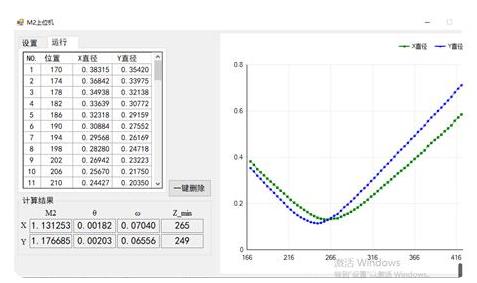Blog más reciente
¿Cuál es la diferencia entre el marcado láser y el grabado láser?
Aug 02 , 2022¿Cuál es la diferencia entre el marcado láser y el grabado láser?
La codificación de tinta, el estampado mecánico, el grabado mecánico, el grabado con troquel y la corrosión química son nuestros métodos comunes de marcado de materiales, pero con el tiempo y los factores ambientales, los inconvenientes de estos métodos operativos tradicionales aparecen gradualmente. La codificación de tinta es fácil de desvanecer y caer, y la tinta es un material químico de impresión y teñido, que no es propicio para la protección del medio ambiente. La tensión mecánica generada por el estampado mecánico y el grabado mecánico tiene un pequeño ámbito de aplicación y no es "amigable" con los materiales duros y quebradizos, y los procedimientos de procesamiento son particularmente engorrosos e ineficientes. Los costos de mano de obra son altos.
With the continuous development of laser technology, the types and performance of laser equipment have gradually improved, and the penetration and replacement of traditional processes has become wider and wider. The use of lasers for marking and engraving has become commonplace. So what is the difference between laser marking and laser engraving?
Laser marking is to irradiate the surface of the material with a highly focused high-energy density beam for non-contact processing, so that the surface of the material produces a permanent, clear, almost no obvious tactile mark, which plays an irreplaceable role in product anti-counterfeiting and root tracing. . At the same time, this process does not generate any mechanical stress and will not cause damage to the material.
Laser engraving uses light as a "knife", with 3D marking software and hardware, by drawing or importing 3D vector graphics, and setting relevant parameters such as the trajectory and speed of the laser spot, the high-energy density laser beam will follow the set items. The parameters remove the surface of the material to expose cavities, display the image at eye level, and use a laser engraver to create deeper marks, often requiring multiple repetitions.
Therefore, the differences between laser marking and laser engraving are mainly reflected in the following points:
The performance results are different. Laser marking acts on the surface of the material, and the marking is very shallow. Generally, the depth is less than 0.5mm, and it is not obvious to touch by hand. However, laser engraving obtains a certain depth of engraving graphics, and the depth can vary from 0.1mm to 100mm.
Different hardware and software are required. Laser marking requires 2D marking software and hardware, while laser engraving requires software and hardware with 3D marking function, and often optional electric lifting platform and rotating shaft can be adjusted in three directions of XYZ.

El láser UV de nanosegundos de 355 nm se puede utilizar para marcado y grabado ultrafinos. Basado en la alta energía de un solo fotón, las características de longitud de onda de onda corta y la alta eficiencia de absorción de materiales del láser UV de 355 nm, es adecuado para marcar alimentos, medicamentos, películas y materiales de embalaje de plástico, vidrio, división rápida de materiales delgados, duros y quebradizos. materiales como zafiro, corte circular de forma especial o grabado profundo dentro del material, la calidad del haz es buena, el volumen es pequeño, la estabilidad es alta, la velocidad de marcado es rápida y la eficiencia es alta.
